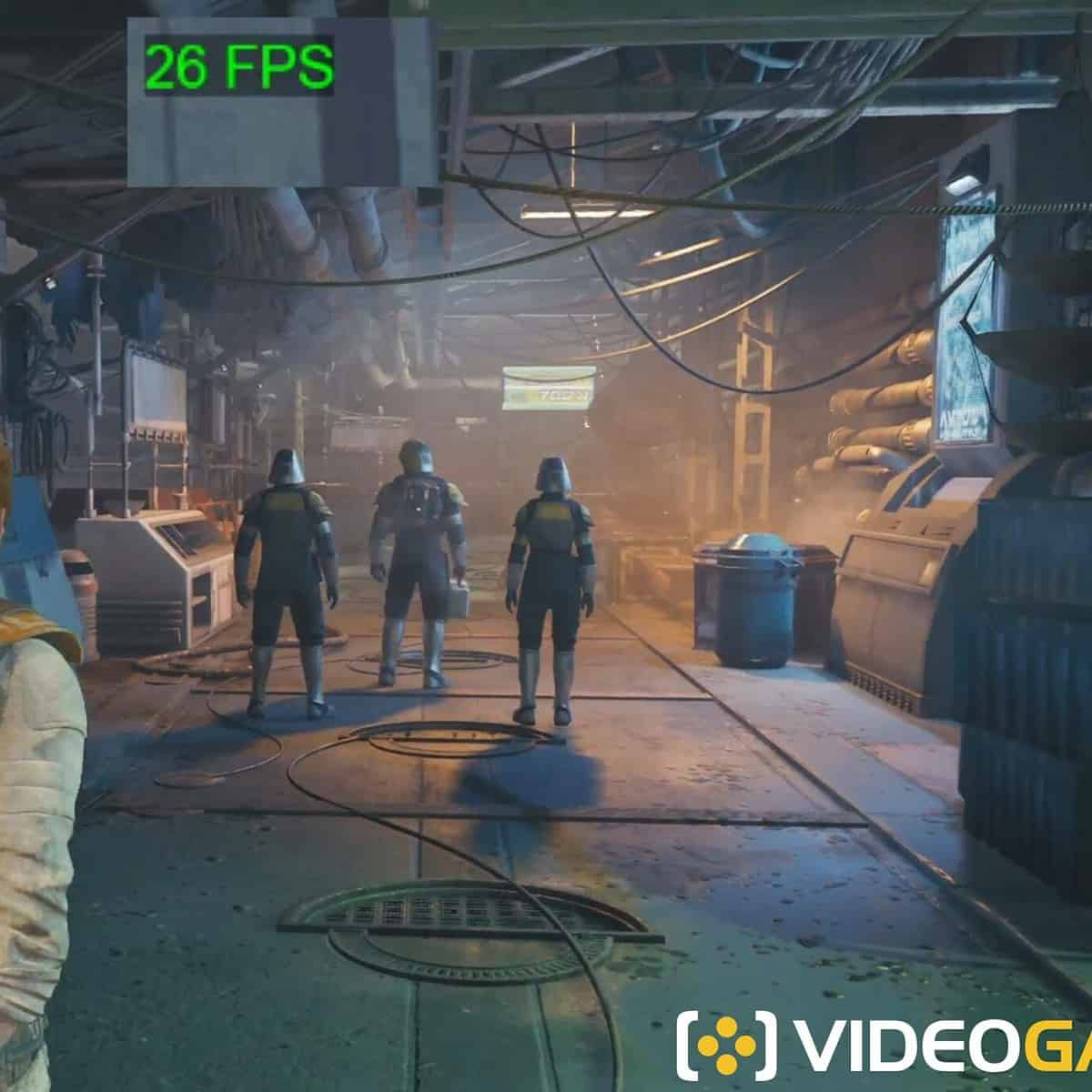Video Gamer is reader-supported. When you buy through links on our site, we may earn an affiliate commission. Prices subject to change. Learn more
If you’re having issues with the Jedi Survivor frame rate, here are some possible ways to fix FPS stuttering.
Despite receiving many glowing reviews, the launch of Jedi Survivor has been mired by PC performance issues. From the feedback we’ve seen, it seems that even the best gaming PCs for Jedi Survivor are struggling, making it clear that some of the issues are with the game itself.
If you’re experiencing stuttering while playing the game, there are a few things you can do that could solve the issue.
How to fix Jedi Survivor frame rate stuttering on PC

Here is a screenshot we captured while playing the first level on Coruscant. As you can see 26FPS is not exactly ideal, and lower than we are used to with our gaming set-up. Throughout the first level, it mostly fluctuated between 20-35FPS sometimes reaching 50FPS in cutscenes.
Before we break down the best things you can do to fix the stuttering in Jedi Survivor’s frame rate, it’s worth keeping in mind that, for many people, the performance issues are with the game itself. The day one patch has reportedly fixed a few issues.
- Enable FSR Performance Mode
- Disable ray tracing
- Update GPU drivers
- Verify integrity
- Wait until you progress to Koboh
Enable FSR Performance Mode
AMD Fidelity FX Super Resolution, or FSR for short, is a technology that optimises performance in compatible games and boosts frame rates. This means that it is only compatible with AMD graphics cards. Nvidia has an equivalent in DLSS but, as the game has an AMD partnership, Jedi Survivor does not have DLSS.
To enable FSR Performance Mode in Jedi Survivor simply go to graphic settings and find AMD FIdelityFX Super Resolution. There are four modes, we’d recommend going for the Performance one.
Disable ray tracing
While the news that Jedi Survivor has ray tracing was music to many gamers’ ears, the light-tracking technology can have a large impact on performance. You will be able to disable it from the graphic settings and there is a good chance that doing so will reduce or eradicate frame rate drops.
If your set-up meets or exceeds the recommended Star Wars Jedi: Survivor System Requirements and you have one of the best GPUs for ray tracing this might seem like a frustrating sacrifice to have to make. However, we’re hoping that this fix will be temporary and that in the future, if your PC is powerful enough, you should be able to play the game with ray tracing enabled.
Update GPU drivers
GPU manufacturers regularly release driver updates to ensure their hardware functions optimally with new games or other components in your computer. If they are not kept up to date performance can be affected and pesky bugs start to appear. In fact, AMD has released a driver specifically for Jedi Survivor. We’ve got guides covering how to update the drivers for the two main GPU manufacturers.
Verify the integrity of the game files
Another common cause of performance issues or glitches in Steam games can come from corrupted game files. These files can corrupt in all sorts of ways and cause anything from frame rate stutter to the game being unable to actually launch.
To solve this issue you simply launch Steam, go to Library, and then right-click on Star Wars Jedi: Survivor. From there go to Properties > Local Files > Verify Integrity of Games Files. This will begin the verification process. Once it is completed restart your PC and launch the game again.
Wait to progress to Koboh
The game’s first chapter is set on Coruscant. It seems that this is the part of the game with the biggest performance and optimisation issues and so the most likely to cause frame stuttering. Gamers are reporting significant performance improvements when they progress to the Koboh, the second planet you reach.
Until we see some more patches, getting through the poor performance of Coruscant may be the only way to raise the frame rate of Jedi Survivor.
Frequently asked questions
What is a good frame rate for Jedi Survivor?
60 FPS is considered a good baseline frame rate for modern gaming. Higher frame rates will also feel noticeably smoother but you’ll need to make sure your monitor or TV has a high enough refresh rate to actually be able to make use of them.
Why is Jedi Survivor’s performance worse in Coruscant?
We do not know for certain but it is likely a combination of the areas on the planet being poorly optimised and also more demanding. Coruscant features lots of open areas with loads of NPC to load and elements to keep track of.

